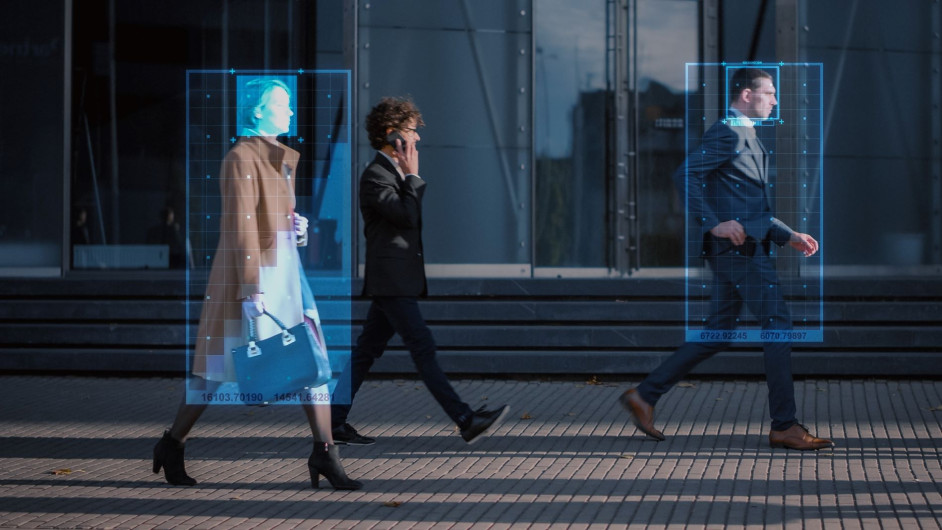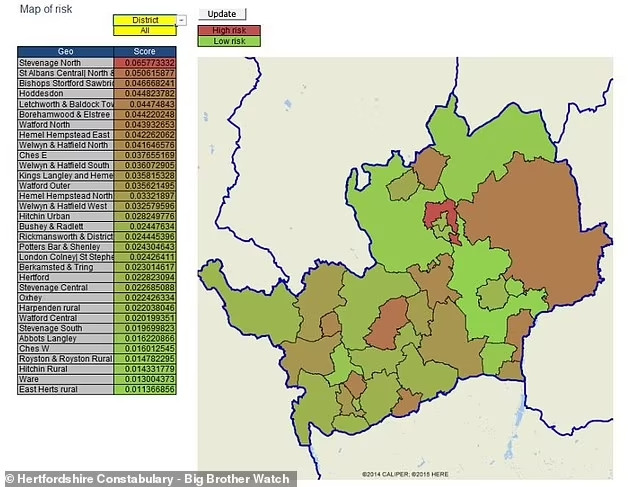From facial recognition cameras that watch you shop to algorithms that predict crimes before they happen, these new tools feel like they’re straight out of a science fiction novel
In his classic novel, 1984, George Orwell imagined how Britain might one day become a totalitarian surveillance state.
However, as Orwell’s novel celebrates its 75th anniversary this month, British police are already developing technologies that resemble the description of the Big Brother regime.
From facial recognition cameras that watch you shop to algorithms that predict crimes before they happen, these new tools feel like they’re straight out of a science fiction novel.
But there is nothing fanciful about AI police officers, who are already ‘patrolling’ Britain’s streets with experts expecting more developments to come.
Jake Hufurt, head of research and investigations at Big Brother Watch, warned MailOnline: “We are sleepwalking into a high-tech police state.”
Live facial recognition
Live facial recognition, as the name suggests, allows the police to to identify wanted persons among a large crowd in real time.
Police use a series of cameras to record the face of anyone passing through a designated zone.
Next, an algorithm compare the faces of those walking in front of the camera with a “watch list” wanted criminals and an alert is generated if the AI detects someone matching the description of a criminal.
Since 2015, several police forces across the UK have started using this technology in public places as part of more targeted crackdowns and at crowded and difficult to police events.
London’s Metropolitan Police and South Wales Police are among the most ardent supporters of the new technology.
This year alone South Wales Police have already deployed eight live facial recognition zones, including a game, the Six Nations and a Bruce Springsteen concert.
Arrest at the coronation of Charles
In total, these cameras scanned the faces of 156,032 people at the coronation of King Charles and led to just one arrest. This is a man who was wanted for sexual offenses and was caught on camera on the day of the coronation. The perpetrator was then taken to prison.
Meanwhile, the Metropolitan Police has already implemented live facial recognition 73 times this yearrecording 146,157 persons, which led in 209 arrests.
A spokesperson for the National Police Chief’s Council told MailOnline: ‘Policing is in a period of challenges and AI offers opportunities for forces to try out new ideas, be creative and look for innovative solutions to boost productivity and be more effective in dealing with crime”.
Strong reactions from political activists
However, political activist groups have raised concerns about the use of live facial recognition, arguing that the technology is too invasive.
Mr. Hufurt says: “It is clear that some [χρήσεις τεχνητής νοημοσύνης]including Live Facial Recognition technology, are incompatible with a democratic society and should be banned.”
In 2020, the court of appeal found that the South Wales Police trial, which scanned the faces of thousands, had been carried out unlawfully without regard to privacy or data protection.
There are also concerns that facial recognition may be worse at recognizing black facesmaking them false positives and unnecessary arrests more likely.
We’re taking groundbreaking legal action to roll back Orwellian facial recognition.
Join the fight to roll back live facial recognition cameras in the UK & give legal support to people falsely flagged as criminals⤵️https://t.co/7WxldldlX4
— Big Brother Watch (@BigBrotherWatch) June 17, 2024
While the Metropolitan Police’s tests were found to be 90% accurate, tests conducted by the UK’s National Physical Laboratory (NPL) suggest that bias remains.
In the NPL report published in March last year, the Met’s technology was found to have a “statistically significant imbalance with more black people having false positives than Asians or whites”.
Eye in the Sky Cameras
Another way AI is making its way into policing is through the use of cameras that automatically detect when crimes are being committed.
Drivers who commit offenses on Britain’s roads are likely to soon get some leeway from an artificial intelligence police officer watching over them.
Safer Roads Humber has launched a week-long trial of an AI-powered mobile phone camera which is trained to detect whether drivers are using their phones or not wearing a seatbelt while driving.
The camera is activated by a trailer parked on the side of the road and captures images of any passing drivers.
Facial recognition in stores
However, it is not only on the roads where artificial intelligence is present. Supermarkets and other stores are increasingly using facial recognition technology for theft.
Last October, Police Minister Chris Philp announced a £600,000 ($752,000) partnership between the police and 13 of the UK’s biggest retailers, known as Project Pegasus.
Under Project Pegasus, stores such as John Lewis, Tesco and Sainsbury’s could send their own CCTV footage to the police for analysis.
The police will then use AI facial recognition software to identify the thieves.
According to a study by South Wales Police, this can cut the time it takes to identify a suspect from around 14 days to just minutes.
Predictive policing
Through a technology called ‘predictive policing’, UK police officers use artificial intelligence to predict where crime is likely to occur and who is likely to commit it.
These systems take the vast amounts of data available to the police and algorithms to try to predict the risk of crime.
Avon and Somerset Police use a system called SPSS, which creates a ‘risk score’ for people based on past data.
A list of models used by SPSS clearly states that they can “estimate the risk of a burglary over the next 12 months”.
The models also claim to be able to predict someone’s risk of committing a serious robbery, reoffending or even becoming a victim of domestic violence.
Rather than looking at individuals, predictive policing tools focus on geographic areas.
This tool allows police to create a risk scale for areas with a population of less than 1,000 to 3,000 people using data such as unemployment, deprivation, rates of anti-social behavior and previous crimes.
Source :Skai
I am Terrance Carlson, author at News Bulletin 247. I mostly cover technology news and I have been working in this field for a long time. I have a lot of experience and I am highly knowledgeable in this area. I am a very reliable source of information and I always make sure to provide accurate news to my readers.













